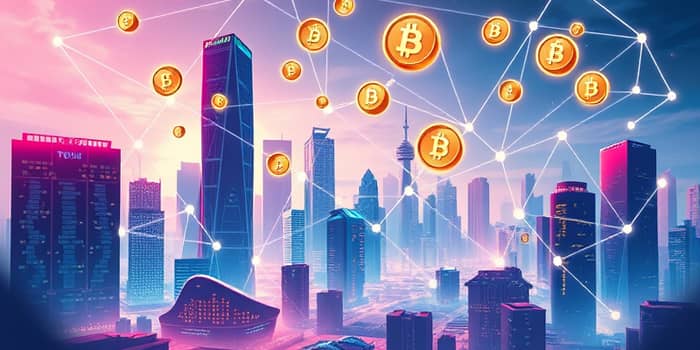
Across industries and markets, the digital transformation of tangible wealth is accelerating. Tokenization of real-world assets leverages blockchain technology to convert property, commodities, and financial instruments into digital tokens. This article illuminates how this groundbreaking innovation fosters liquidity, broadens access, and redefines investment paradigms while acknowledging technological, regulatory, and operational challenges.
By dissecting definitions, processes, benefits, challenges, and future trajectories, we aim to equip readers with a practical roadmap and strategic insights. Whether you are an investor, asset manager, or blockchain enthusiast, this comprehensive guide will inspire you to explore new horizons in asset tokenization.
At its core, tokenization of real-world assets is the conversion of ownership rights in physical or financial assets into digital tokens recorded on a blockchain or distributed ledger. Each token represents a share or claim, acting as a digital certificate of ownership or rights to the underlying asset. Through this mechanism, traditionally illiquid resources become divisible, tradeable, and transparent.
The process enables fractional ownership through digital tokens, allowing high-value assets like real estate or art to be split into smaller, more affordable units. Investors can thus acquire fractions of assets that would otherwise require significant capital, democratizing participation in markets historically reserved for institutional players.
Tokenization spans a diverse array of asset classes, both tangible and intangible. Platforms are now exploring everything from residential properties to digital royalties, forging new frontiers in decentralized finance and beyond.
Implementing asset tokenization involves a series of coordinated steps and advanced technologies. Each stage is critical to ensure compliance, security, and seamless trading on secondary markets.
Smart contracts serve as the backbone, enforcing rules for transfers, compliance checks, and automated payouts, thus ensuring immutable transaction records and audit trails and streamlined administration.
As tokenization gains traction, its advantages become increasingly evident across multiple dimensions. From investors to issuers, all stakeholders can harness a new paradigm of efficiency, transparency, and inclusivity.
This technology not only unlocks capital tied up in property, art, or debt but also fosters innovative financial structures previously unachievable within traditional frameworks.
Despite its promise, tokenization faces significant hurdles. Navigating these complexities is essential for sustainable growth and widespread adoption in financial ecosystems.
Regulatory uncertainty remains at the forefront, as jurisdictions vary in their classification of tokenized securities, property rights, and anti–money laundering obligations. In parallel, technological intricacies arise from integrating blockchain infrastructure with legacy systems and ensuring smart contracts are free from vulnerabilities.
Security risks, custody challenges, and potential legal disputes over enforceability of digital ownership further complicate matters. Additionally, early-stage market adoption may struggle with limited liquidity, a scarcity of trading venues, and the absence of standardized protocols or infrastructure.
Pioneering initiatives are already demonstrating the tangible benefits of tokenization across sectors. Real estate platforms like RealT and Brickken enable investors to buy fractional shares in rental properties, receiving rent distributions through smart contracts. Major financial institutions, including JPMorgan and Franklin Templeton, are exploring tokenized bonds and money market funds, achieving faster settlements and broader investor reach.
Art and collectibles markets are also evolving, with high-end galleries offering shared ownership in blue-chip artworks. Meanwhile, commodities such as gold and carbon credits are being tokenized, creating new liquidity pools for institutional and retail participants alike.
As policy makers grapple with digital asset classifications, a coherent regulatory framework is emerging. Key considerations include token categorization as securities or commodities, cross-border enforcement protocols, and compliance with KYC/AML standards. Agencies such as the SEC in the United States, FINMA in Switzerland, and ESMA in the European Union are crafting tailored guidelines for tokenized instruments.
Harmonization efforts aim to reduce jurisdictional fragmentation, enabling interoperability between platforms and ensuring legal certainty for international investors. Yet, maintaining investor protection while fostering innovation remains a delicate balance for regulators worldwide.
Looking ahead, tokenization is poised to democratize investment at unprecedented scale. As blockchain networks mature and regulatory clarity improves, billions of dollars in illiquid assets may transition onto distributed ledgers, unlocking capital for growth and innovation.
The convergence of tokenized assets with decentralized finance (DeFi) ecosystems promises novel applications, from collateralized lending to automated portfolio management. Emerging standards such as ERC-1400 for security tokens will enhance interoperability and legal compliance, while robust custody solutions will safeguard digital holdings.
Ultimately, the success of real-world asset tokenization will hinge upon technological resilience, regulatory harmonization, and broad market acceptance. As barriers dissolve, investors and asset managers alike will access new pathways to liquidity, efficiency, and value creation, redefining how wealth is stored, transferred, and grown in the digital age.
References





